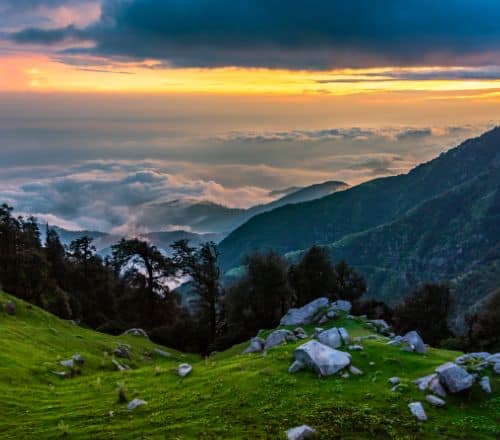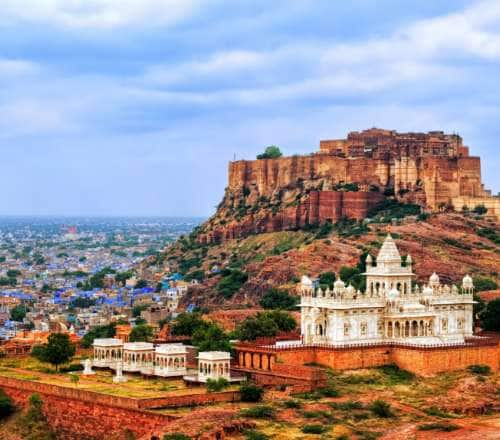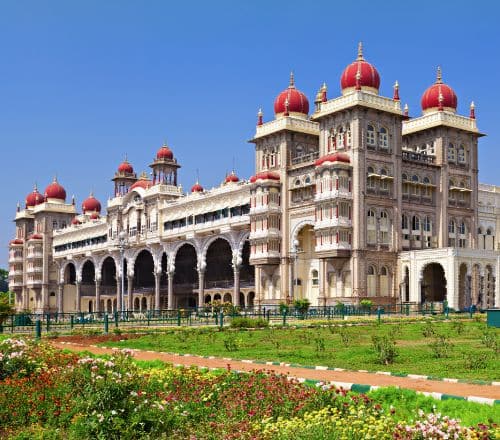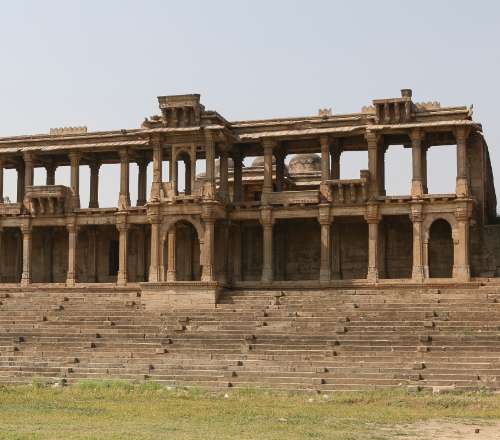Stay logged in to proceed with bookings, orders and offers.
On changing the terminal, you will loose items in your cart. Are you sure you want to change your terminal?
Trace the history of our favourite brew in Munnar and learn about a unique employee-owned tea estate
Life is so simple when you're holding a cup of steaming hot tea,' I mused, enjoying the fragrance of the fresh brew I held in my palms. I was in India's first-ever tea museum – the Tata Tea Museum in Munnar.
I had just seen an informative video as part of the museum tour. An exhibit there displayed a quote by General Douglas Hamilton from 1862.
'Surpassingly grand and incomparably beautiful; the views are the grandest and most extensive. The charming variety of the scenery, comprising undulating grassy hills, wooded valleys, rocky crags, and the blue ranges in the far distance, present a view far beyond my power to describe and which must be appreciated.'
Taking a sip, I tried to imagine Munnar of the late 1800s and the lives of travellers who fell in love with the place. John Daniel Munro, a British resident, had visited Munnar to settle a border dispute and fell in love with the terrain. A.W. Turner, another Britisher, started the first tea cultivation here. In 1880, European planter A.H. Sharp bought 50 acres of land in Munnar to initiate large-scale tea cultivation. This changed the ecosystem of Munnar forever.
Munnar has many waterfalls, contoured tea estates, and organic spice gardens - all delightful propositions for tourists. However, I find the history of Munnar's tea estates and their evolution the most fascinating.
Read More
Read Less
Tea was first planted in Munnar in 1880 by A.H. Sharp at his Parvathi Estate. In 1888, the Kanan Devan Planter's Association was formed, named after the famous Kanan Devan Hill in the region. By 1894, Munnar had 26 registered smallholdings. Private companies started taking an interest in large landholdings. Estates were being sold in high-altitude ranges as well.
With history following my every step, I browsed through several rare historical artefacts and photographs at the museum. I saw an original tea roller from 1905, a rotor vane, and a rail engine wheel from the 1920s that transported labour and raw material between Munnar and Top Station (the highest point of Munnar).
An infographic in the museum showed one-third of Kerala's tea production under Kanan Devan Hills Plantation Company! Digging deeper, I found the one-of-a-kind story of this tea company fascinating and inspirational.
I was amazed to learn about its ‘bottom-to-top management’ approach. The company was the first in the plantation industry to implement a participatory management system where almost every employee is a stakeholder. This ensures their exemplary participation in the company's growth in return for a sizable portion of the profits. T.V. Alexander, the founder of Kannan Devan Hills Plantation Company, developed this visionary approach.
The company has 12,000 employees in a three-tiered structure. Unlike any other corporate entity I know of, the workers have their representative on the company's board of directors. Thus, crucial aspects of employees' welfare and worker safety are always prioritised along with generating revenue.
I exited the museum, thoroughly pleased for having learned about such a phenomenal company. The cinnamon tea I was served at the end of the tour also did wonders in elevating my mood.
Shall we stop at the spice garden? It's very good,' asked my cab driver, Prakash, for the third time since he had picked me up from the Kochi Airport. I understood that the garden was part of the tourist trail, and Prakash would get a commission from whichever plantation he took me to. So, I decided to stop by one on our route.
The caretaker at the spice garden was more than willing to show me around. I walked along a dirt trail, marvelling at beautiful spice plants, some I had never seen before, such as the red banana plant. The garden also had everyday spices such as pepper, curry leaves, turmeric, cinnamon, and clove.
At the end of the tour, my tour guide turned his showmanship turned into a well-practised sales pitch. He offered me products ranging from spices to tea, coffee, and chocolate powder. He also offered the customary ayurvedic oils from Kerala that treat every ailment under the sun! Despite my desire not to get trapped in touristy habits, I bought a bagful of spices and condiments, thanks to the glib salesman!
Prakash was hell-bent on showing me all the touristy trails. 'You must visit Top Station. It is the highest point here. Everyone goes there,' he insisted. I did not need much persuading as a friend had already told me that, at 1,700 metres above sea level, Top Station is almost always covered in fog and haze. The view from the top is just white fluffy clouds. Since I had already booked the cab on a per-day basis, I agreed to the two-hour drive from Munnar to Top Station.
During the drive, my spirits were lifted with each hairpin bend that revealed splendid sights of the valley and a steady drop in temperature. The landscape became prettier as the roads got narrower. Winding paths snaked through beautiful carpeted tea gardens. I made multiple stops to soak in the view. Full marks to my friend and her review.
On the Kochi-Madurai-Tondi point road, around 15 minutes from Munnar's town centre, near Pallivasal Auto Stand, we took a sharp turn towards Attukad Waterfall. The road here was damaged in many places and was much narrower than the main road. But this part of Munnar was the highlight of my trip. The hills were resplendently green. The tea estates blended seamlessly with the hills. Jagged, rocky outcrops on distant hilltops made the scenery more picturesque.
After the turn, the waterfall is a 10-minute ride by car or a half-an-hour trek. 'This is the best part of Munnar,' claimed Prakash. I made Prakash wait in the car while I strolled leisurely, admiring the gorgeous landscape. The light turned golden, almost ale coloured.
I saw glimpses of the waterfall, a white, gushing silver streak amid abundant green foliage. With every step, the fall grew larger. Its roar became more deafening. Several small streams flowed down the hill by the side of the road. I reached the fall after walking for 40 minutes. Water streams gushed down over craggy rocks from all directions.
This multi-layered fall converges into the Muthirappuzhayar river. A bridge connecting the other side of the road allowed a closer look at this beautiful fall.
There is something magical about finding a waterfall by the roadside. I saw two such falls on the way to Munnar from Kochi.
One is the unique seven-tiered Cheeyappara Waterfall at 300 metres above sea level. It was beside the highway about 45 kilometres outside Munnar. I stood very close to the fall, looking up at its sheer drop and strength.
Five minutes along the same road is the picturesque Valara Waterfall. Unlike the Cheeyapara Waterfall, it is not accessible and falls directly amid dense vegetation.
Munnar and its surrounding regions have many waterfalls. One of them is the lovely Lakkam Waterfall surrounded by lush greenery. The government has developed ample infrastructure for tourists to reach the fall. I saw many people bathing under the waterfall, frolicking in its foamy chaos.
Although many commercial establishments have come up, Munnar remains strikingly beautiful. It is home to some quaint and lavish properties set perfectly in the lap of tea gardens. I have been to other places with tea estates and waterfalls. However, each hill station has its charm and story to tell. Munnar's story revolves around its beautiful landscape as much as it does around the inspiring tales of employee-owned tea estates!
How to reach: Munnar is a four-hour drive from Kochi (click here for directions)
Best time to visit: October to February
Places to stay:





The Adani One expressly disclaims all liability, direct and indirect, in respect to actions taken or not taken based on any or all the contents of this Blog. The Blog is an opinion of the contributor based on the collation of data from various sources and is provided only for information purpose. Adani One does not canvass, advertise, solicit, invite or induct for any product, merchandise, information, brand or any other materials mentioned in the Blog, nor does it obtain any monetary benefit from the same. Reader is advised to read and apply his/her intellect and discretion in this regard. Any Intellectual Property mentioned in this blog belongs to the rightful owner. We do not intent to claim any interest over the same.